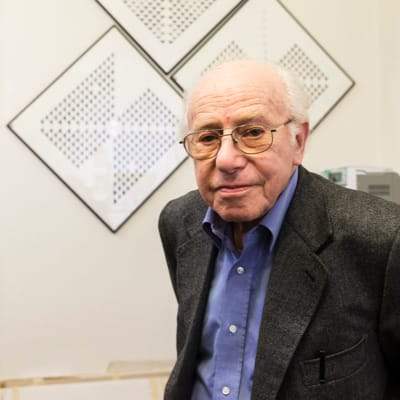
Holocaustsurvivor
Artist
Fishel Rabinowicz

Ein Projekt der Gamaraal-Stiftung
About the Artist

Fishel Rabinowicz was born in 1924 in Sosnowiec, Poland, and grew up as the third of ten children in a traditional Jewish family. His talent for painting was discovered at an early age and encouraged by his father. After the German Troops invaded Poland on September 1, 1939, thereby triggering the Second World War, the town of Sosnowiec near the German border was occupied just four days after the outbreak of the war. The life of the Rabinowicz family was violently interrupted. The majority of the family members, 31 people, fell victim to the racial madness of the German Nazis.
On May 26, 1941, Fishel Rabinowicz was captured in a street raid and transported to a Nazi labor camp and later to nine different between forced labour and concentration camps. In the concentration camp, Rabinowicz was given the number 19037: "From that moment on, I was no longer a human being, only a number". He was assigned to the commando in charge of building the motorway and later he was assigned to a working group, which laid railway tracks. In these commandos, the mortality rates were particularly high and it is by chance that he himself survived. "I had fiery red hair, which is why the Germans called me "Redhead" and gave me lighter work than the other group members. And I was never lost."
On February 9, 1945 about 1220 prisoners were chosen at the Kittlitztreben camp to set out on a 325-kilometer-long death march south to the Buchenwald concentration camp. Fishel Rabinowicz was among the chosen. The completely exhausted prisoners marched through the country for 55 days, and those who collapsed from exhaustion were shot by the SS. During the march, Fishel Rabinowicz observed from afar the bombing over Dresden. "When you were in the camp for so many years, under such a regime, you get an instinct. An animal instinct. We felt it was coming to an end. We felt that the monster was in agony. For us, it was something fantastic." When they finally arrived to Buchenwald, the prisoners were left to their own devices. Fishel Rabinowicz was close to death when, on April 11, 1945, the Buchenwald concentration camp was liberated by the third American army.
After long stays in German and Swiss sanatoriums, Fishel Rabinowicz began training as a graphic artist and decorator at the Zurich School of Applied Arts in 1949. He then moved to the canton of Ticino to pursue his profession and married in 1955 Henny Better, from whom he had his son José in 1957. Only after his retirement did he begin to reappraise his traumatic life story through graphic expression. His works have achieved worldwide fame. Although Fishel Rabinowicz has found a way in his art to process his traumatic experiences, he - and every single survivor - remains psychologically marked by the experiences of the Holocaust.
The drawings of Fishel Rabinowicz touched everyone who saw them – this is the reason the Israeli PM B. Netanyahu, presented to the German Chancellor Mrs. A. Merkel the work Shoah-Holocaust, an original print of Rabinowicz’s work on behalf of Yad Vashem in Jerusalem as a meaningful and appropriate gift to the Memorial to the Murdered Jews of Europe in Berlin.
Message by the artist Fishel Rabinowicz
I am a survivor of the monstrosity and tyranny of the German Nazi regime. A regime that had set itself the goal, and almost achieved it, of annihilating European Jewry and eradicating its culture. I was rescued from the barbed wire of the concentration camps, physically and mentally deeply wounded and marked for the rest of my life; uprooted from my own culture and security.
Today, only weak and scattered memories remain of this destroyed world and its culture. In 1939, Poland had a Jewish population of 3,351,000 souls. With the exception of a few thousand members, the Jewish community practically perished, as if an avalanche had swept over it.
How do we face these facts today? Does it make sense to remember this tragedy or should it be suppressed? No, because the subconscious cannot be overplayed. Every survivor must be ready to bear witness of the lost world. He owes it to the past to bear this oppressive burden, because the witnesses are all gradually dying away.
Since I had this realization, the question of whether and by what means I could personally give shape to this task has been harboring in me for decades. According to my talents, a solution outside of spoken or written words slowly came to mind. Not in autobiographical memories, oral tales and legends, but in pictures, I sought a symbolic representation of the cultural heritage, of the spiritual message that Judaism has carried through thousands of years. Through graphic expression, I try to convey the mission of Israel and to represent the concrete highlights of its civil and religious history.
The technique I use is called ‘paper cuts’, a technic to create images used two hundred years ago in Eastern Europe. Two sheets of paper are the basis. In the upper (white) sheet are cut out the geometrical figures and letters. The lower sheet (black or coloured) presents the colours.
I hope that my works will help the viewer to renew the idea of a distant spiritual world and that the artistic nature of the representation will prevent the history from falling into oblivion. For it is art too which can pass on the memory.
Explanation of the Pictures
See all 30 arts by Fishel Rabinowicz